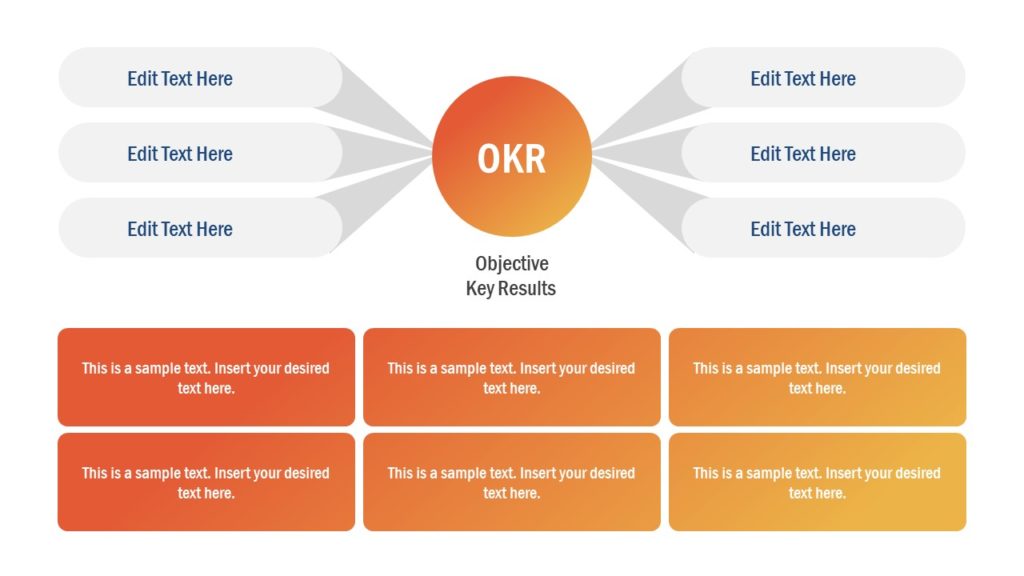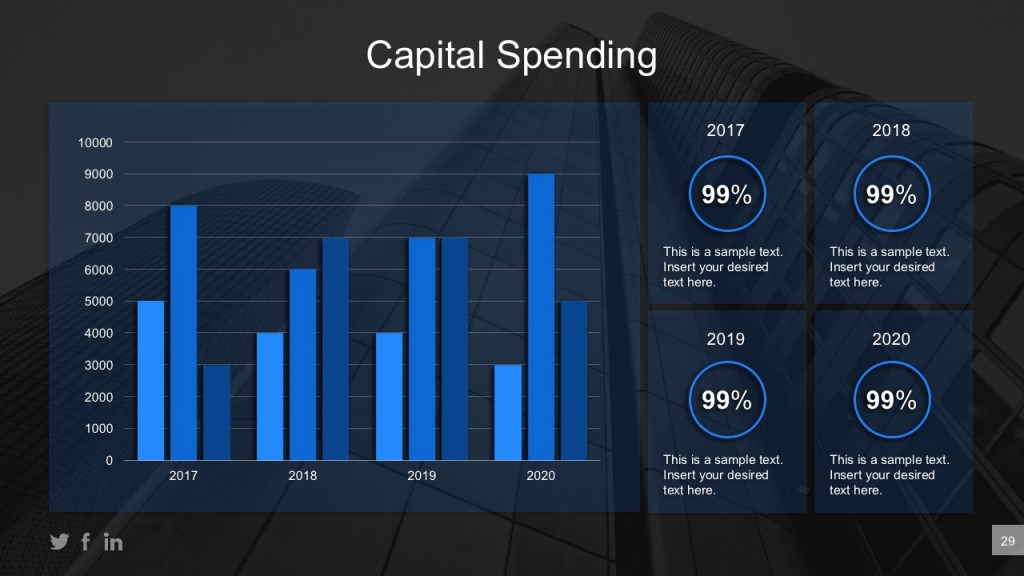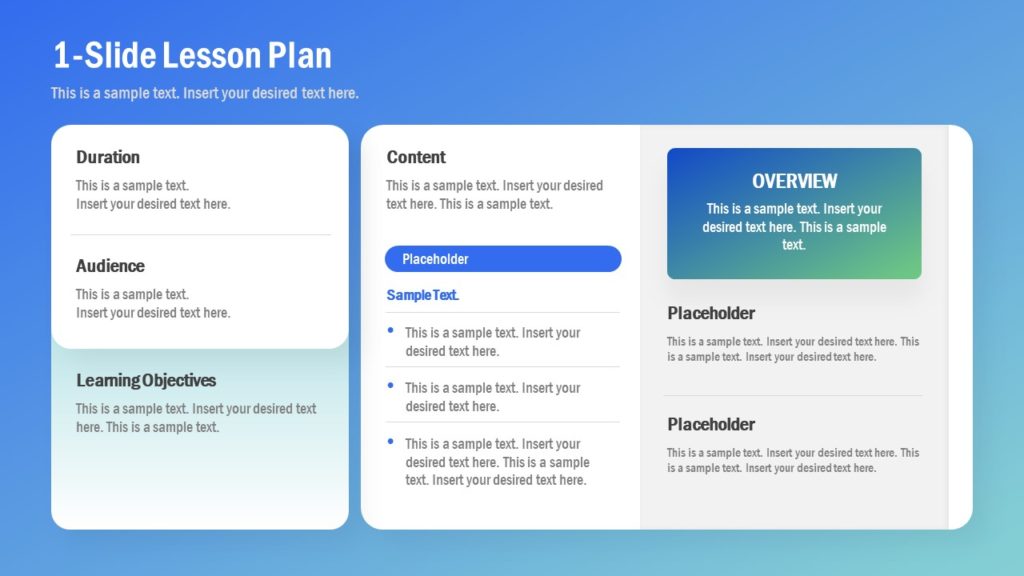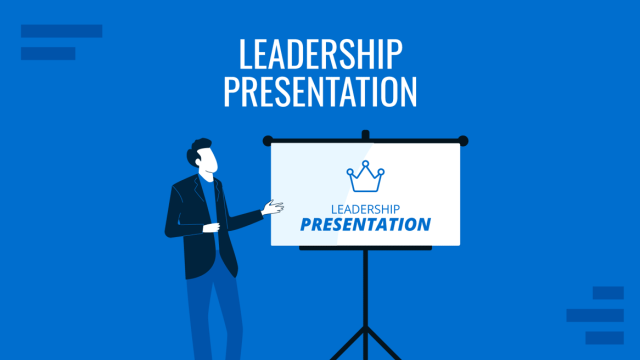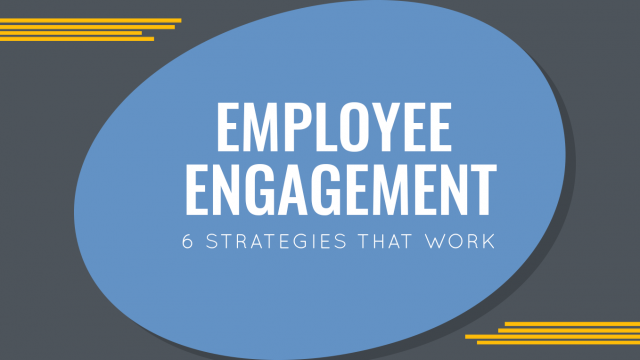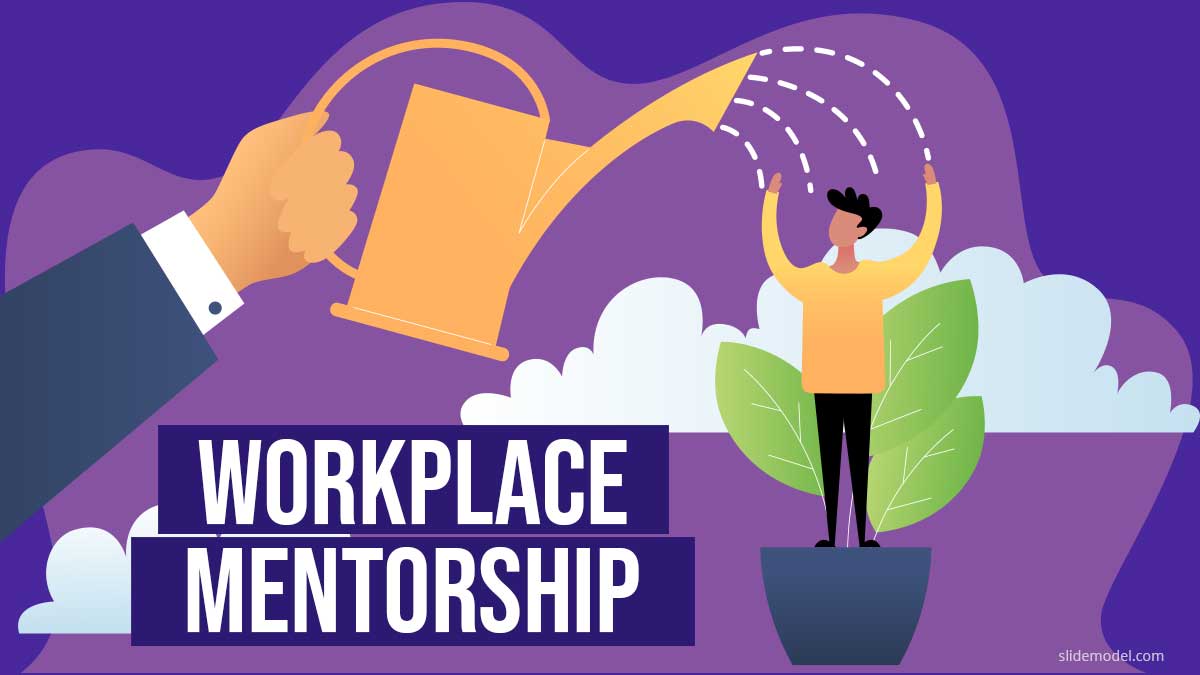
At work, everyone has plenty of opportunities to learn — independently, through peer collaboration, and via help from more experienced colleagues. At most workplaces, such learning interactions are often informal, unplanned, and thus delivering varied results. Formal workplace mentorship can help formalize knowledge sharing and ensure a continuous flow of experience exchange between senior and junior staff.
- What is Mentorship?
- The Benefits of Mentorship Programs at the Workplace
- How to Structure an Effective Workplace Mentorship Program
- To Conclude
What is Mentorship?
A simple mentorship definition is this:
Mentorship stands for structured guidance, provided by a more experienced person to a junior trainee.
However, the type of provided ‘guidance’ can differ a lot. Eric Parsloe, one of the founders of the European Mentoring and Coaching Council, further defines mentoring as ‘support and encouragement of someone to manage their own learning so that they may maximize their potential, develop their skills, improve their performance and become the person they want to be.’
In other words, mentorship relationships are focused on:
- Passing down knowledge and personal experience to others
- Helping someone structure their personal or professional development activities
- Empowering others to become successful in their new role or endeavor
The obvious next question is this: do such relationships actually work? Data says yes. According to Sage, 97% of mentees find their relationships with the mentor to be valuable. Among businesses, over 93% of SMEs also acknowledge that mentoring can help them succeed. Finally, 70% of small businesses that received entrepreneur mentorship survive for five years or longer. That’s twice the rate compared to non-mentored companies.
Mentoring vs Coaching: What’s the Difference?
Both mentoring and coaching are aimed at promoting personal and professional development. But there are two important differences in such relationships:
- Coaching is more performance-driven and goal-oriented. You are coached to improve a certain skill or reach some measurable milestone. Mentoring emphasizes continuous development and helps the mentee develop a more wholesome understanding of their professional goals and career path.
- Coaching sessions have a more rigid structure, aimed at promoting highly controlled sharing of knowledge/experiences. Mentorship programs can be both structured or semi-structured. In both cases, the dynamics of mentor-mentee relationships is less directive. A mentor does not impose their decisions, but rather provides counseling and guidance. The mentee is to decide whether they’d like to act on provided advice or not.
Fresh graduates also often wondering about the difference between mentorship vs internship.
An internship is a more hands-on, structured training activity, aimed at mastering specific workplace skills, gaining on-the-job experience, and doing actual work for the company.
Mentorship relationships are more focused on gaining knowledge from one person and learning from their host of experiences, rather than mastering a certain skill or practicing a certain workplace role.
For example:
- A technical internship can help you develop some workplace skills such as programming, project management, quality assurance, etc. Plus learn how the tech department in the host company works.
- During a technical mentorship session, you can exchange knowledge with a senior professional in your niche and learn about: better approaches to coding/system architecture, different career paths, helpful training/learning opportunities, standard hiring processes in popular companies, and more.
The Benefits of Mentorship Programs at the Workplace
Over 70% of Fortune 500 companies run mentorship programs including giants such as Amazon, Apple, GE, Intel, and Microsoft among others. So why is mentorship important for businesses?
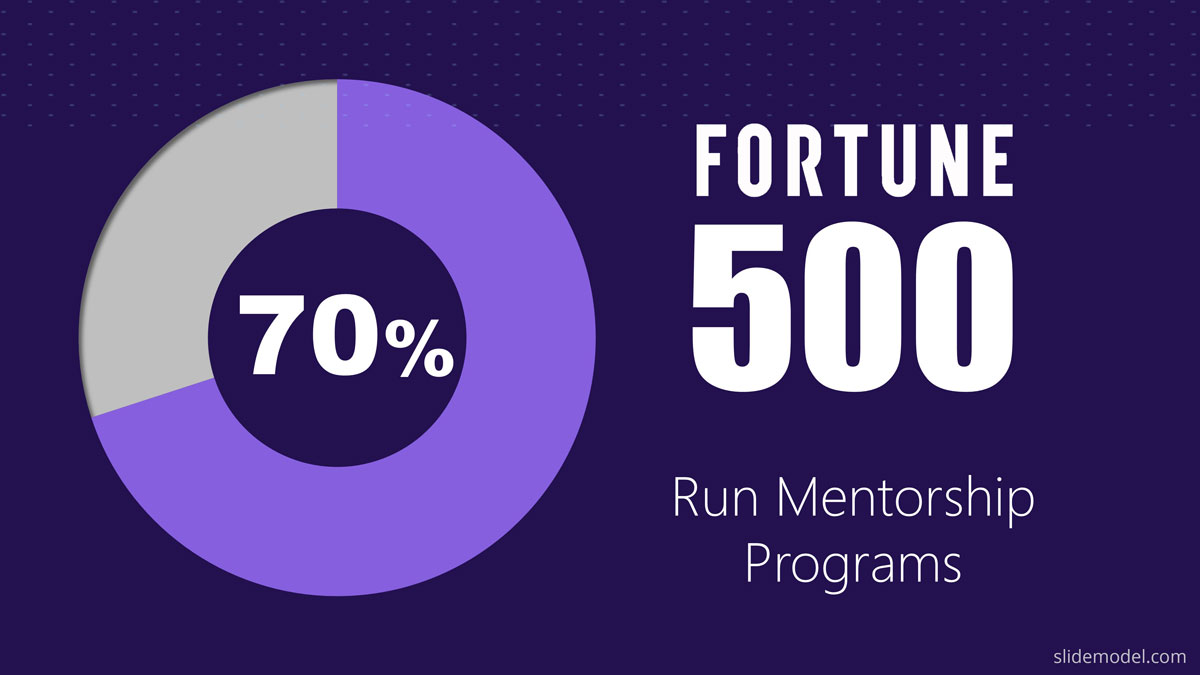
The short answer is because it helps new employees get more productive in their role faster while keeping the ‘older guard’ engaged.
Benefits for Mentors
- Satisfaction: Most of us have this in-built urge to pass on our knowledge to others. Especially, if we were once taught by great teachers. Thus, a lot of people find mentoring to be naturally pleasant. And academic research further suggests that workplace mentors tend to report higher job satisfaction and fulfillment.
- Personal development: To be a good mentor, you need to have strong communication, listening, and interpersonal communication skills. Mentorship helps you hone these. As a study among chief financial officers suggests, 38% of respondents named ‘the ability to develop leadership skills’ as the biggest benefit of mentorship.
- Growth opportunities: Mentoring means being proactive. And proactive people are often more successful in their job. A body of research suggests that workplace mentors perform better at work and see greater career success.
Benefits For Mentees
Having a senior professional to confide in or a peer mentor to consult with positively impacts every person’s personal and professional development.
Data from the University of Southampton suggests that mentees:
- Advance in their career faster and have a higher rate of promotion
- Earn and negotiate higher compensation
- Develop better time management skills and productive habits
- Have higher professional self-esteem, job-related wellbeing, and better work-life balance
- Develop better networking and interpersonal skills.
Given the above benefits, it should come as no surprise that most progressive companies have professional mentorship programs for employees.
How to Structure an Effective Workplace Mentorship Program
Great mentorship programs in the workplace come in all shapes and formats. They do not necessarily need a rigid structure, but rather a set of facilitating guidelines (for both mentors and mentees) to follow.
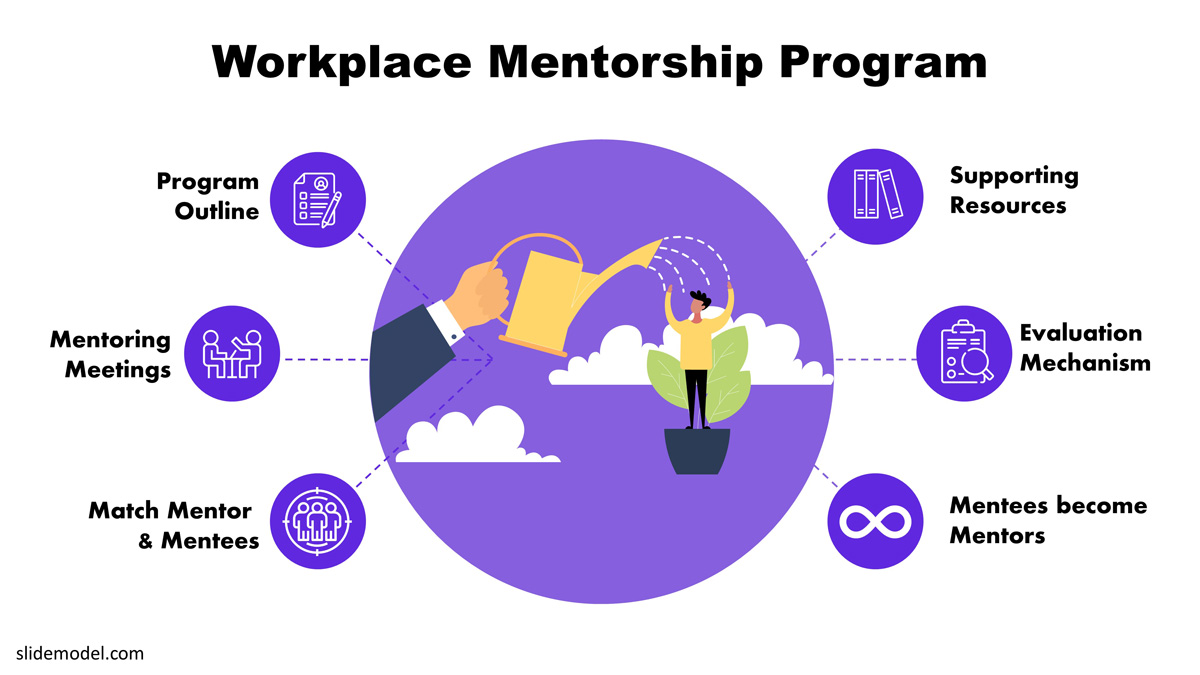
1. Start with a Program Outline
At first, you may need to ‘sell’ the idea of participating in mentorship training both to the prospective mentors and the mentees.
The easiest way to do so is to ask for their ideas and input. Host a quick survey to understand the needs of your workforce. In particular, ask the mentees about:
- Development opportunities that they lack
- Types of motivation/support they’d be interested in receiving
Then schedule conversations with senior staff ‘ the prospective mentors. Ask them to help you create:
- An outline of responsibilities for mentees
- The basic qualification requirements for mentors
- A preliminary set of program guidelines.
The program guidelines should set the baseline expectations around the mentorship program standards, time-commitments, and desirable outcomes.
2. Determine the Optimal Type of Mentoring Meeting Formats
Your mentorship program template has to specify:
- Anticipated number of participants
- Mentoring group size
- Program duration
- Meeting length and frequency
- Evaluation process
- Types of meeting formats
Regarding the latter, some of the popular mentorship formats include:
- Small group discussions: Works best for guiding new employers, interns, or trainees. Or mentorship programs based around certain issues e.g. female leadership.
- Peer to peer mentorship: This can be super beneficial as part of an employee onboarding program for new hires. Also, works great with technical teams where you’d want to promote more consistent work quality among all members.
- 1:1 meetings: The most productive type of mentorships, but also the hardest one to scale as there will always be in-balance when it comes to matchmaking.
3. Strategize How You Will Match Mentors and Mentees
The first thing most program participants will wonder is how to find a mentor.
You have to options to facilitate match-making:
- Assign mentor-mentee pairs
- Allow self-matching
Both options have their merit and their limitations.
Facilitated matching can be hard to pull off if you are working with a limited pool of prospective mentors. And this would be the limiting factor of your program.
According to SHRM, an effective way to deal with this limit is to ask the program applicants to indicate the most important criteria they’d like to be matched on. For example relevant experience, specific role/industry, mentors professional background, etc. If you can’t find them a ‘match’ in your books, follow-up with them and ask if they are willing to compromise on their primary criteria in favor of some other qualities.
Self-matching can help promote more effective mentorship alliances as we tend to know best what type of person we might bond with. For that reason, a lot of companies create an open database of eligible mentors and prompt mentees to connect with the person they love best.
For example, the University of Cambridge has a mentor lookup portal where students can browse different professors by areas of interest/expertise and then follow-up with them for a mentorship request.
A corporate portal could have similar functionality:
- Mentor pages with bios/interests
- Mentor availability and requirements for mentees
- One-click calendar booking tool for meetings.
4. Prepare Supporting Resources
Finally, to help first-time mentors assume their new role, especially if asked to lead group sessions, prepare a set of extra resources such as:
- Syllabus of sessions: Work out a set of themes for each mentorship session and a baseline set of topics/issues for the mentor to cover.
- Meeting agendas: To keep the meetings productive, create and share an agenda with every participant in advance. Doing so will help keep each mentorship session on the rails.
- Extra training materials: While mentorship is largely based on sharing personal experience, it doesn’t mean that such programs have no room for extra learning and development opportunities.
If the mentor sees that some people struggle with the same issues, consider creating a follow-up eLearning course or, at least, provide the mentees with access to corporate training materials on the matter or propose to purchase relevant books or subscriptions to an online resource.
5. Set Up an Evaluation Mechanism
Regular program evaluations are essential to ensuring that your mentorship program only gets better over time.
A quick way to do so is by using the Stop/Start/Continue evaluation technique. At regular checkpoints (e.g. after 3 months, or after the mentorship session complexion) ask all the participants to provide answers to three simple questions:
- What 3 things we should STOP doing during the program?
- What 3 things we should START doing during the program?
- Which 3 actions we should CONTINUE?
Analyze all the feedback and make improvements before onboarding the new set of mentees.
6. Repeat the cycle – Mentees become mentors
If your mentoring program shows positive results, your mentees will become the mentors of future juniors. Repeating the cycle aiming for continuous improvement is part of a successful mentoring program.

To Conclude
There’s a good reason why workplace mentorship remains popular decade over a decade: this practice delivers measurable results. Organizations with a strong mentorship culture have higher levels of talent readiness, better cross-department collaboration standards, less communication silo, and overall higher levels of employee engagement. So perhaps it’s time for you too, to consider starting a formal mentorship program at your company. You already have all the resources for that!
